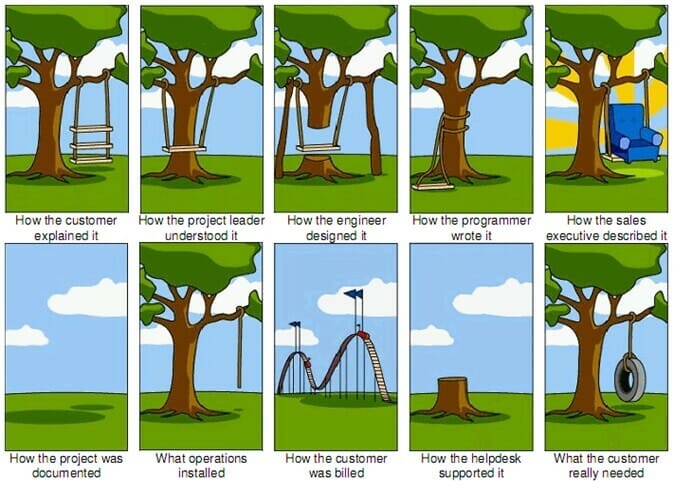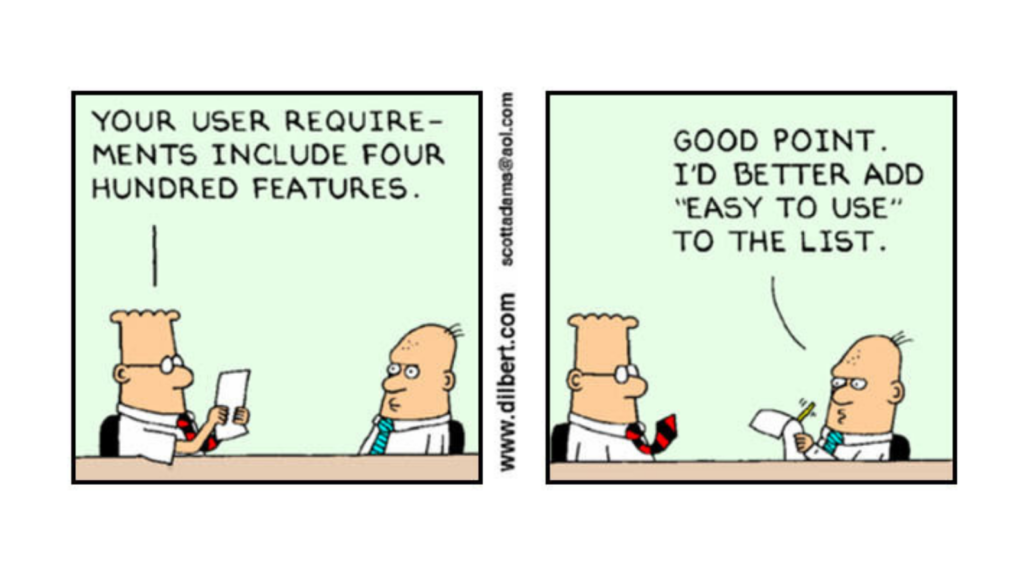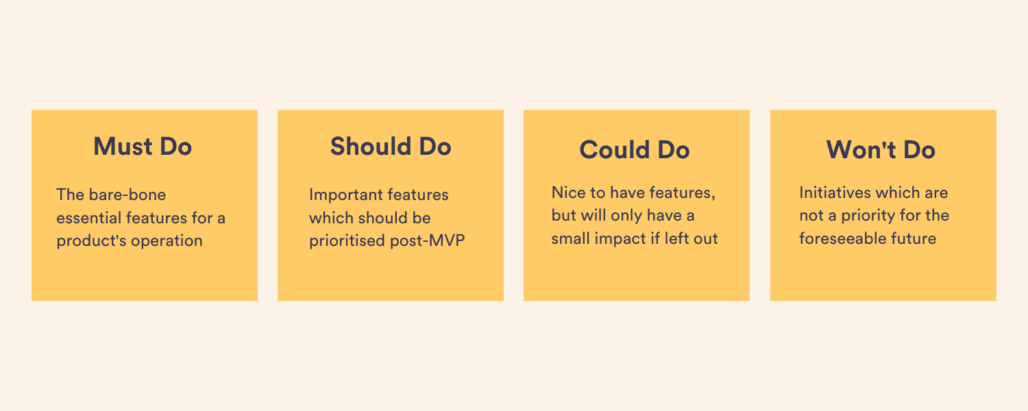Article
How to decide which features to include in your Minimum Viable Product (MVP)

What is requirements gathering?
Requirement gathering is the process of understanding what you’re supposed to be building, and why you’re building it. It helps you to distill down all your Minimum Viable Product features into just the most important, giving you a clear plan of what you want and exactly how you’ll get there.
Why is it important?

It’s really important to go through the requirement gathering phase in the early stages to set yourself on course and manage expectations of what can be delivered and by when (there’s no point promising your investors an anti-gravity machine in 10 days time!). As an agency ourselves, normally we’ll offer a ballpark figure on cost, followed by a thorough discovery process, followed by a more accurate idea of cost.
Our normal discovery process:
- Gain an overview of the business, its customers and the business’ goals.
- Run through the existing technology (if there is one!) and look at the main pain points
- Understand the user’s customer journey and what features they’re likely to need
- Understand from an admin/business perspective what the required features and functionality are
- Build a technical and design delivery plan, as well as a project schedule
You should do this at the beginning of your project. This process is an absolute must and shouldn’t be skipped unless you want to sabotage your own chances of success.
These are the steps we go through to distill down a Minimum Viable Product’s features:
Set your “North Star”
Setting goals and objectives early on will align everyone within the process. At Unfold we run discovery workshops to help uncover (amongst a wide array of other things) the problem your business solves, and what positions you so effectively solve it for your customers.
Understanding this is crucial for any digital project, because it helps aid decision making when deciding which Minimum Viable Product features to include and which to build later or drop, by focusing us on the end-users.
Research your potential features
Once you know the problem you’re trying to solve and how you’re best positioned to solve it, you need to decide which features you’re going to include. You’ll want to let your target audience guide this selection process so you’ll need to do a mixture of interviewing customers and looking at data. Ask yourself what do they need the platform to do? What are they using with existing options that they will want to see in your platform?
Gather data from users:
Look at data: We use tools such as Google Analytics for existing platforms and Google Trends to show where demand lies. If you do have access to a Google Analytics account it can be really handy for identifying bottlenecks and areas where people currently fall off the user journey.
User Interviews: These are a great way of finding out your users’ needs directly from them, in their own words.
Focus Groups: This method is great for establishing a consensus view on features, but beware that sometimes the loudest voices end up being the ones heard, so be sure to make a point of gaining perspectives from everyone.
Questionnaires: Good for gaining initial responses although allows less interaction between you and the user.
Direct Observation: for this we’d recommend using a session recording software such as Hotjar. This allows you to see in real time exactly how your users use your platform, which can give you great insights into where they come across barriers in the user journey.
Researching Competitors: You can learn a lot from looking at your current competitors and seeing what they offer their customers. Ask your users which features they value the most and see if there is anything they think is missing or could be done better.
If you want to know more, we’ve done a much deeper dive into the topic of user research in our guide to User Testing.
Prioritise the most valuable MVP features

It’s best to consider all the desired features as a wish list. It’s neither wise, nor cheap to try and build all these features in one go; or else risk seriously missing the mark with what your customers are demanding. Instead, you need to start whittling down to only the most realistic and most important features so that you don’t get bogged down with too many options at once. This process is about finding the features your users can’t live without and providing the greatest value.
At Unfold, we do this using the MoSCoW method (must do, should do, could do, won’t do). This method helps to clarify the priority order of all your proposed features.
The MoSCoW method for distilling MVP features

This is why you need your “North star” to help guide you to the most important features and requirements that will add the most value to your users.
And remember – you’ll never get all the requirements down and there will always be more to add. This process is about preparing for this eventuality and being able to adapt and respond as the requirements change.
Create pragmatic documentation
Once you’ve gathered the user requirements and decided on your MVP features, you’ll need to create a document which captures the requirements so that everyone can review and agree. This specification needs to be written up with a level of detail which is easy to understand for everyone involved; marketers, developers etc.
It’s important to be pragmatic about the level of detail that goes into this document so that it reflects the nature of the project (enterprise level software or startup MVP will need quite different levels of detail). Certainly with the latter you can expect the requirements to be constantly changing and evolving, so your documentation needs to be able to as well!
Your documentation should detail how things will work, what tech we’re going to use and any third party services which the tech may be reliant on. For example if you needed to have a payment gateway on the site you’ll need to research, test and choose a provider such as Stripe.
When doing this, we research providers and evaluate their offerings and costs.
As an agency, this documentation also becomes the basis for providing concrete time and cost estimates to our clients.
Next steps:
Following the requirement gathering process you’ll be all ready and set to get going with prototyping and building your MVP. To find out exactly how to do that next phase, check out our Prototyping guide.